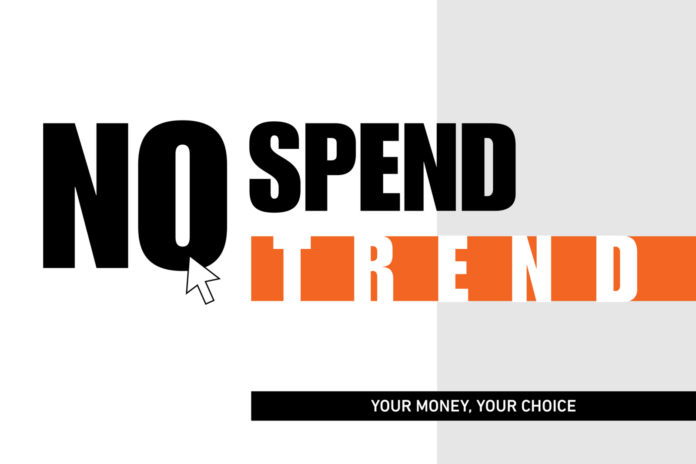For a multitude of reasons, Americans are reevaluating their financial decisions and checking their expenditure report cards. While last year saw the rise of the loud budgeting trend on social media, this year has introduced its demure cousin – the no-spend trend. This cultural shift toward greater financial literacy gained major traction at the start of the new year and has been attributed to a reaction to inflation, compounded initially by post-holiday spending remorse. Recent personal finance movements have also seen a rise in popularity due to their prevalence on social media and on forum-style websites (aka Reddit).
Also referred to as a financial detox, the no-spend trend first found broad appeal as a set of challenges, like no-buy and low-buy January – a month during which participants try to spend as little as possible, with a particular eye toward trimming unnecessary purchases. As an act, it’s not absolute, but does seem to provide a step in the right direction. The rules are straightforward, but easily tailored to the individuals taking on the challenge. One simple and strong example assigns stop/slow/go designations to various categories:
Double Green = no cost items and experiences
Green = groceries, gas, toiletries, healthcare, utilities
Yellow = dining out, donations and gifts, non-essential transportation
Red = clothing, home décor, gear for hobbies (or whatever your object weakness may be)
Eric Roberge, writing for Forbes, suggests that most individuals see greater success when they develop and utilize rules-based systems to manage money. One example he gives is the rule of 50/30/20. For bonuses and gains, he proffers that 50% should be placed in low-term investments, 30% may be spent now, and 20% should be put toward shorter-term goals. The standard non-investment version of the same rule states that 50% of income should cover needs, 30% toward wants, and 20% toward savings.
Roberge concedes that the actual metrics need to be informed by the individual’s financial status and needs. As with any personal finance rule, the percentages and their direction can be adapted, but the structure is what matters most.
Other tactics include recording all the purchases not made. Assigning value and tallying each time you didn’t drive through Starbucks for a little treat allows you to see a fairly accurate estimation of how much can be saved in a set period of time. A friend of mine has been posting her monthly progress on social media and it’s a consistently impressive report, with regular savings of hundreds of dollars. Her most impressive month came in February when she showed a gain of nearly $3,000. In a revelation that made me feel better about my life choices though, that uptick turned out to be the consequence of a major outlier – she sold her Super Bowl tickets and canceled her travel plans after her beloved Bills didn’t make the cut. It was a blow for her football fandom but a lucky break for her finances.
I’ve personally internalized this shift in a soft way, trying to cut back, while not necessarily holding myself to hard and tight rules. Even that casual approach has brought with it some success, and I’m sure there’s room for improvement. With my curiosity piqued as to how much I landed in the red and yellow areas over the past month, I flipped through my recent online purchases. On the spectrum of basic human impulse, I can say with confidence that my spending habits didn’t yield anything too shameful when presented in black and white. My most recent acquisitions were dog food, iron supplements, underwear, and shampoo. Arguably, all needs (though I admittedly like expensive shampoo). If I scroll a bit deeper though, I’m reminded that last month, my haul included a hair clip shaped like a whale, a pair of Nike slides, a hoodie (I live in Key West), and a set of condiment dishes. Arguably, not needs. And while I may not get a lot of wear out of my new heavyweight sweatshirt, I’m comfortable knowing that those purchases were ultimately a small tally (far less than 30% of my income), that brought me little zaps of joy.
Anecdotally, it seems people who are engaging with the no-spend trend are seeing success. Most report feeling less stress, having the ability to pay down debt, and seeing a realignment of their spending habits. Experts suggest that sustainable long-term success comes from having the right perspective and setting realistic expectations. As with so many aspects of managing our own little lives, the secret seems to be intention and balance. Intention comes in setting rules to which we can adhere and then holding ourselves accountable. Balance is important in allowing for, and forgiving the inevitable missteps. Much like sticking to a healthy diet, financial wellbeing comes from the secure knowledge that you should eat more vegetables, but a cookie won’t kill you.























